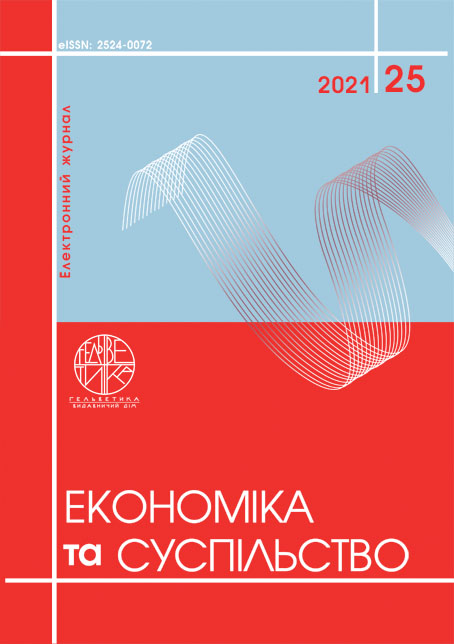PECULIARITIES OF SAVINGS BEHAVIOR OF HOUSEHOLDS IN UKRAINE IN CONDITIONS OF A PANDEMIC
Abstract
This article identifies aspects of the vision of the terminology of "savings" of domestic and foreign economists in different periods of time, analyzes the savings behavior of households in Ukraine, in particular in a pandemic based on different ways of interpreting it. The analysis of financial indicators of development is carried out household sector, as well as the dynamics of key macroeconomic indicators, affecting their functioning in the period from 2018 to 2020, and analyzed that a number of negative trends occurred before the pandemic, and the first six months of the spread of COVID-19 only deepened them and revealed all the weaknesses. It is noted that in 2020 the most important factor is that influenced the behavior of households, the structure and dynamics of their income and expenditure, became distribution of COVID-19 in Ukraine and the world. Uniqueness and unpredictability of the modern the economic crisis caused by the destructive effects of the COVID-19 pandemic, determine the relevance of the study of changes in patterns of behavior of households, formation of their income and expenses, as well as the need to analyze the preconditions in Ukraine on the eve of the pandemic, and became an additional catalyst for the crisis. The influence of various factors influencing the saving behavior of Ukrainian households, in particular the role of the crisis caused by the spread of COVID-19, has been determined. With the help of statistical data, the current state of the share of savings in the income and expenditure item of the Ukrainian population in the period 2018-2020 is analyzed and assessed. . On the basis of indicators of saving behavior, problems of development of savings of the population of Ukraine are defined. By means of the corresponding analysis of statistical data of indicators of incomes, expenses and kinds of savings of the population of Ukraine and experience of the decision of economic crises, . After analyzing the data on austerity behavior, the shortcomings that caused the unstable economic situation in households were identified despite the COVID-19 pandemic. will develop investment tools to a high level. Relevant conclusions have been made on these tasks.
References
Э.Д. Долан, Д.Е. Линдсей; пер. с англ. В. Лукашевич. Рынок: микроэкономическая модель. 1996. 496 с. doi: 5-7216-0062-Х
Джон Сломан совместно с М. Сатклиффом; [пер. с англ. : Габенов Н.А. и др.]. 5-е изд. СПб. [и др.] : Питер, 2005. 830 с. doi: 5-94723-176-X
Ломачинська І.А. Оптимізація фінансової поведінки домогосподарств у трансформаційній економіці України. Економічний простір. 2011. № 49. С. 141–149.
Кізима Т.О. Фінансова поведінка домогосподарств: сутність, класифікація, чинники впливу. Світ фінансів. 2011. № 4. С. 19–26.
Державна служба статистики. Статистична інформація. URL: http://www.ukrstat.gov.ua/operativ/oper_new.html
E.D. Dolan, D.E. Lindsay (1996). The market: a microeconomic model. doi: 5-7216-0062-Х
John Sloman together with M. Sutcliffe (2005) [trans. with English: Gabenov N. A. etc.]. (GPP Pech. Dvor). 830 s.. doi: 5-94723-176-X
Lomachynska I.A. (2011). Optimization of financial behavior of households in the transformational economy of Ukraine. Economic space. № 49. S. 141–149.
Kizima T.O. (2011). Financial behavior of households: essence, classification, factors of influence. The world of finance. № 4. S. 19–26.
State Statistics Service. Statistical information. URL: http://www.ukrstat.gov.ua/operativ/oper_new.html


